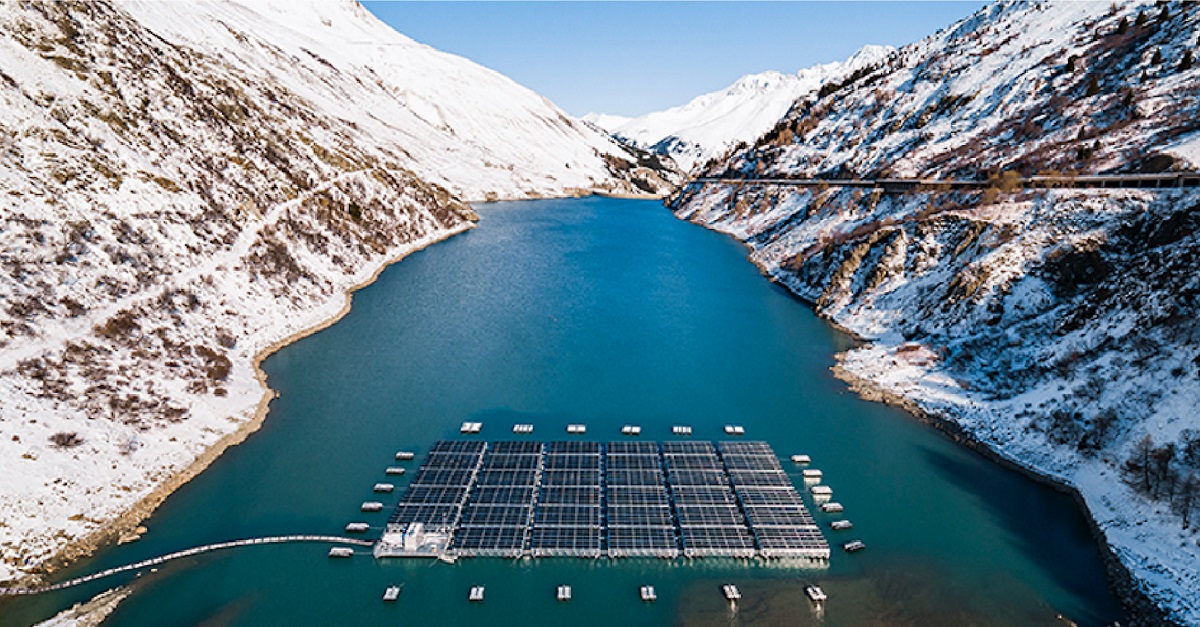 A 448 kW FPV installation at 1800 m altitude location in Switzerland.
A 448 kW FPV installation at 1800 m altitude location in Switzerland.Image: University of Exeter, Ocean Engineering, Creative Commons License CC BY 4.0
A scientist from the University of Exeter in the United Kingdom conducted a comprehensive review of research performed for water-based PV (WPV) systems.
In his paper “A comprehensive review of water based PV: Flotavoltaics, under water, offshore & canal top,” published in Ocean Engineering, Aritra Ghosh described the technical features of four different types of WPV systems – underwater, floating, offshore, and canal top – and presented the impact of ambient factors on their performance.
“Floating photovoltaics (FPV) are more common now for investigation and are most often installed on a stationary water body globally such as lakes or ponds while canal top is popular in India,” he explained.
Much research has been conducted on FPV for shallow water and offshore as it provides significant positive attributes such as low operating solar cell temperature and enhanced electrical efficiency, no requirement of expensive land cost, and relatively less affected by dust and shading. While the paper offers highlights of studies into the benefits and efficiency of underwater PV, offshore PV, and FPVs, Grosh said that intense research studies and cost analyses for canal top PVs are not widely available.
For this review, Grosh utilized relevant databases ─ including Google Scholar, ScienceDirect, Scopus, and Web of Science ─ to investigate literature that had been published over the past few decades. The Scopus database, which is operated by Elsevier, covers citation and abstract information specifically for peer-reviewed literature, such as scientific journals, books, and conference proceedings.
“Knowledge of the ecological impacts of WPV systems is limited. Currently, most scientific work has focused on technological advancements, rather than the impacts on the environment,” the study points out. “Careful planning is essential before placing a WPV system to minimize natural damage and improve the environmental impact.”
The paper stresses the important role WPV can play as a “third pillar in the global solar energy market” along with ground-mounted and building-integrated PV. However, the success of WPV will require public support. Grosh specifically mentions the use of underwater PV in swimming pools as a case where people will need to understand the benefits, due to the higher initial cost. “Currently, no such study is reported that can tackle a particular area and perform a societal implication study for WPV.”
Grosh concludes that significant knowledge sharing is vital and “various stakeholders such as PV, marine, ocean and water research bodies should work together to find out the simpler solution for WPV application in future.”